Airlines, Airports and Airliners 14 to 21 Nov 2022
Compiled by Willie Bodenstein
Google Banner Ad
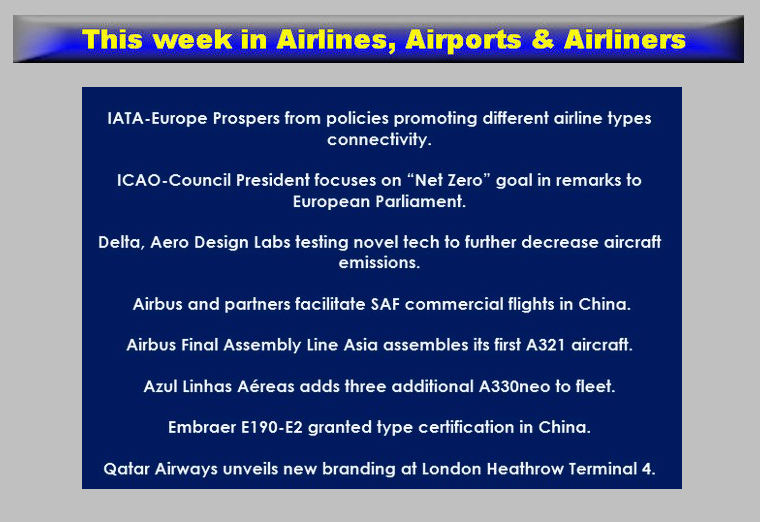
IATA-EUROPE PROSPERS FROM POLICIES PROMOTING DIFFERENT AIRLINE TYPES CONNECTIVITY

The International Air Transport Association (IATA) called on governments and regulators to encourage stronger European cohesion and economic development by embracing policies to promote greater air connectivity. Key to this is recognising the different strengths and benefits offered by the diverse types of carriers operating in Europe.
“Europe, just like the rest of the world, relies on air connectivity, which is vital for society, tourism and trade. Business users of the European air transport network--large and small-have confirmed this in a recent IATA survey: 82% say that access to global supply chains is “existential” for their business. And 84% “cannot imagine doing business” without access to air transport networks. The deregulation that delivered the Single Aviation Market is one of the significant successes of the European project and it would be a travesty if regulations that failed to take proper account of the realities of the airline business were to undermine this achievement. New evidence shows that Europe benefits from many different kinds of airlines and it needs all these different business models - and the services they provide - to thrive,” said Willie Walsh, IATA's Director General.
European regulators have chosen to tackle several challenging air transport issues in the coming months, including airport slots, passenger rights and sustainability. These all have a potential impact on the choice and value that European travellers have come to expect and it is vital that regulators have the full picture on the contribution different airline business models bring to air connectivity. To assist policymakers, in the study of how Airline Business Models meet Demand in Europe (pdf) IATA Economics analyse the extent of the connectivity provided by Low-Cost Carriers (LCCs) and network carriers in Europe. The report shows that they offer different and complimentary types of connectivity, while also competing on many popular routes.
The report was launched at the IATA Wings of Change Europe event being held in Istanbul, Türkiye, 8-9 November. Its key findings include:
The number of European-registered LCCs has nearly doubled since 2004 to 35, while the number of network carriers has fallen slightly over the same period (from 149 to 131). The number of passengers on origin-destination non-stop flights within Europe carried by LCCs reached 407.3 million in 2019, compared to 222.5 million for network carriers.
Within Europe, the number of origin-to-destination flight itineraries served by network carriers is 2-4 times greater than the flight itineraries served by LCCs before the pandemic.
The importance of transit passengers in facilitating services to remote or small urban centres is crucial. The network carriers' hub-and-spoke model enables a large network of connections even where demand is relatively low. This ensures that even the smallest or most remote European city with a runway can be fully connected to a multitude of destinations across the world, enabling trade and economic development. The report details how the number of passengers flying connecting itineraries within Europe carried by LCCs was less than 9 million in 2019 compared to around 46 million carried by network carriers.
While 72% of intra-European passenger demand flies on routes that have competition between LCCs and network carriers, that demand comprises only 6% of total intra-European itineraries. Some 79% of European itineraries are flown by network carriers only (compared to 15% which are LCCs-only). Thus, LCCs tend to compete with network carriers on the most popular routes, but network carriers perform a vital function providing connectivity to less popular European destinations, which is only viable because of the hub-and-spoke model.
On intercontinental travel, network carriers unsurprisingly provide the vast bulk of connectivity. For intercontinental travel, there is competition for 13.5% of passenger demand, but the overlap in routes offered is just 0.3%.
Cargo capacity is crucial for Europe's trade. 99.8% of belly capacity is provided by network carriers, reflecting the huge demand for air cargo to intercontinental markets compared to the relatively low demand for intra-European air cargo. It should be noted that intercontinental belly capacity is supported by the viability of passenger hub-and-spoke connections.
“Stakeholders from across the aviation sector are united on the need for regulations which promote the co-existence of different business models, encouraging healthy competition and maximum consumer choice. Türkiye is a good example of how to grow national connectivity and allow different kinds of carriers to succeed. What is crucial is that policies for growth go hand in hand with sustainable solutions,” said Mehmet T. Nane, Vice Chairperson and Managing Director of Pegasus Airlines and Chair of the IATA Board of Governors. Pegasus Airlines is the host of the third Wings of Change Europe conference, bringing together some 400 delegates to discuss key aero-political topics and promote a stronger European aviation sector.
Sustainable growth
Travel at every level must be sustainable. Aviation has set out a clear commitment to reduce its CO2 emissions to net-zero by 2050. This industry target was recently matched by governments at the International Civil Aviation Organisation (ICAO). Achieving net-zero will require a huge effort from industry with government support. Policies to promote the production of Sustainable Aviation Fuels (SAF), to push for the development of zero-emissions aircraft and to accelerate emissions savings through airspace and airport infrastructure, are vital.
“European States talk a good game on sustainability, but their record on delivery does not often match the ambition of their words. While some politicians flirt with ideas like banning short-haul air travel, which would save less than 5% of emissions at huge economic cost, practical measures like the Single European Sky for air traffic control, which would cut emissions up to 10%, remain politically frozen. The focus on SAF is welcome but forcing it to be delivered equally at all airports across the EU makes no sense. A book and claim system would facilitate faster adoption at much lower cost without in any way diminishing the environmental benefits. We should be focusing on incentivising SAF production in the greatest quantities at the lowest cost, wherever that may be,” said Walsh.
Google Banner Ad
ICAO-COUNCIL PRESIDENT FOCUSES ON “NET ZERO” GOAL IN REMARKS TO EUROPEAN PARLIAMENT
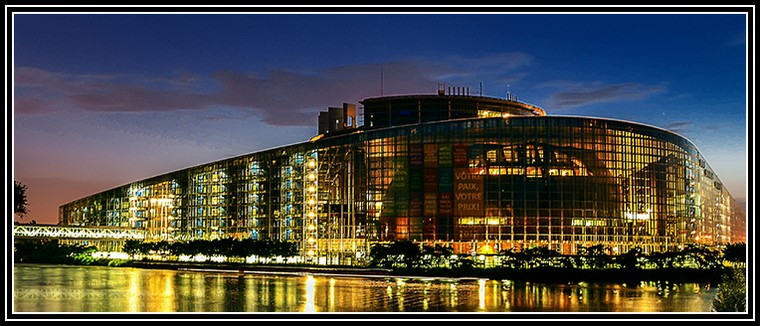
In an address to the European Parliament's Committee on Environment, Public Health and Food Safety on 7 November 2022, ICAO Council President Salvatore Sciacchitano highlighted and welcomed the European Union's strong support of the 41st ICAO Assembly's Resolutions on the decarbonisation of the global aviation sector:
On a new long-term global aspirational goal of net-zero carbon emissions by 2050 for international aviation, in support of the Paris Agreement temperature goal; and on the first review of the Carbon Offsetting and Reduction Scheme for International Aviation (CORSIA), to secure its strong environmental integrity.
The President addressed the Committee remotely from Sharm el Sheikh, Egypt, where he was participating in COP 27.
Mr. Sciacchitano provided an overview of how the ICAO Council and Secretariat are supporting the implementation of these Resolutions.
He underscored the continued successful implementation of CORSIA, despite the severe impact of the pandemic on the global air transport sector and highlighted the crucial support of the European Union for ICAO's Assistance, Capacity-building and Training for Sustainable Aviation Fuels (ACT-SAF) programme. The European Union was the first entity to commit to financing ACT-SAF, through a Declaration of Intent signed by Transport Commissioner Adina Valean in the margins of the ICAO Assembly.
Finally, the President also re-iterated ICAO's commitment to cooperating with the European Union and its member states in this area, declaring that “the European Union, which intends to become the first carbon neutral continent with its Green Deal, has very high ambition when it comes to decarbonising aviation and I can assure you that ICAO shares this ambition.”
DELTA, AERO DESIGN LABS TESTING NOVEL TECH TO FURTHER DECREASE AIRCRAFT EMISSIONS

?Delta is taking another step toward its goal of net-zero emissions by 2050 as it tests novel drag-reduction technology by Aero Design Labs on its 737-800 and 737-900 fleets. By reducing drag, aircraft are more aerodynamic and use less fuel while in flight.
The companies' memorandum of understanding includes testing and FAA certification of the technology for Delta's 737-800 aircraft starting in the first quarter of 2023, followed by the B737-900 fleet in the second half of the same year. Delta will have the option to purchase Aero Design Lab ADRS kits upon certification to outfit most of its more than 200 aircraft in the two fleets.
"This is part of Delta's overall approach to taking short-, medium-and long-term actions to reach our goal of net zero by 2050," said Pam Fletcher, Delta's Chief Sustainability Officer. "Our partnership with Aero Design Labs is a great example of how Delta continues to invest in new ways to modify our operations to make an immediate impact on our carbon footprint today, while we work on longer-term solutions to decarbonise our industry."
Chris Jones, Chief Commercial Officer Aero Design Labs added, "Delta Air Lines has a proven history of leading the industry in innovation and we are proud to formalise our agreement and partner in the process to achieve FAA certification. This is a partnership formed by Delta and Aero Design Labs to contribute to the International Air Transport Association (IATA) net zero 2050 carbon reduction targets."
Delta's world-class operations and unique technical capabilities mean that in 2022 alone, Delta expects to have reduced fuel consumption by over 10 million gallons through operational and fleet modifications, such as optimising flight speeds, improved landing procedures, the installation of enhanced winglets and lightweight landing gear tyres.
Mahendra Nair, Senior Vice President - TechOps Operations & Supply Chain Management added, "Delta is excited to expand our partnership with ADL to test and certify both the 737-900ER and 737-800NG drag reduction kits, continuing our investment in fuel efficiency and sustainability improvements."
Google Banner Ad
AIRBUS AND PARTNERS FACILITATE SAF COMMERCIAL FLIGHTS IN CHINA
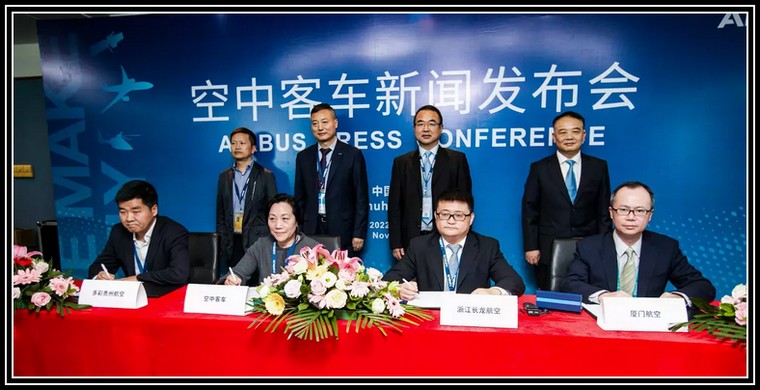
Airbus has signed agreements with Xiamen Airlines, Zhejiang Loong Airlines and Colorful Guizhou Airlines to promote the use of sustainable aviation fuel (SAF) for commercial flights in China. The partnership was announced during the Airbus Press Conference at the 14th China International Aviation & Aerospace Exhibition. With these agreements, Airbus and Airbus' Chinese operators further support the green aviation strategy in China.
The SAF for the above mentioned commercial flights is produced locally from used cooking oil by SINOPEC Zhenhai Refining & Chemical Company, a state-owned manufacturer in China. The Chinese SAF made by the only certified Chinese facility is also used for delivery flights from Airbus Tianjin.
Since October 2022, Airbus Delivery Centre in Tianjin has offered customers the option of a five percent SAF fuel blend for all single-aisle A320neo Family and A350 wide-body aircraft delivery flights.
SAF is a sustainably-produced aviation fuel made from feedstocks ranging from used fat, oil and grease to municipal and forestry waste. Compared to fossil jet fuel, SAF has been demonstrated to result in an up to 80% reduction in CO2 emissions across the entire SAF lifecycle. Therefore, it is considered as a key enabler to contribute to the decarbonisation of aviation.
The 14th Five-Year Plan for the Green Development of Civil Aviation issued by CAAC states that it is necessary to implement a low-carbon development strategy, promote breakthroughs in the commercial application of SAF, and strive to achieve a SAF consumption of over 20,000 tonnes by 2025.
Xiamen Airlines has become the newest Airbus customer in China by placing a firm order for 40 A320neo family aircraft this September. Zhejiang Loong Airlines operates an Airbus passenger aircraft fleet made up of 64 A320 family aircraft. Colorful Guizhou Airlines has a fleet of 8 A320neo family aircraft. All three airlines are committed to sustainable development in their daily operations.
AIRBUS FINAL ASSEMBLY LINE ASIA ASSEMBLES ITS FIRST A321 AIRCRAFT

Airbus has announced the commissioning of the first A321 aircraft to be assembled at its Final Assembly Line Asia (FAL Tianjin) in Tianjin, China. The breakthrough expands and deepens the collaboration with China's aviation industry and demonstrates Airbus' commitment to enhance its long-term strategic partnership with China.
The FAL in Tianjin officially started the adaptation work to become A321 capable in August 2022. It is the first major upgrade of the assembly line since operations commenced in 2008. FAL Tianjin's first A321 aircraft is scheduled for delivery in early 2023.
“Since we announced our plans to expand the capability of FAL Tianjin to A321 production last November, I am proud that the Airbus Tianjin team has successfully completed the relevant adaptation work on schedule by working closely with European experts and our suppliers to overcome the impact of COVID-19” said George Xu, Airbus Executive Vice President and Airbus China CEO. “The commissioning of the first A321 aircraft underlines Airbus' commitment to China, marking a new milestone in the industrial cooperation with our Chinese partners.”
Airbus has four A320 Family assembly facilities around the world: Toulouse, France; Hamburg, Germany; Tianjin, China; and Mobile, United States. By the end of 2022, all commercial aircraft assembly sites will be A321-capable, as part of the industrial strategy to de-risk the ramp up and to meet the rising share of A321 production.
Inaugurated in 2008, FAL Tianjin was the first Airbus commercial aircraft assembly line outside Europe. In the same year, the first aircraft sections arrived on site. Since its first A320 delivery in 2009, FAL Tianjin has delivered more than 600 aircraft over its 14 years in operation. It has become a role model of successful Sino-European cooperation.
The A321neo is the longest-fuselage member of Airbus' best-selling, single-aisle A320 Family, comfortably seating as many as 244 passengers in a higher-density arrangement, with a longest range reaching 4,700nm/8,700km. Featuring the widest single-aisle cabin in the sky, the A320neo Family offers a 20 % reduction in fuel consumption and CO2 as well as a 50% noise reduction compared to previous generation aircraft, thanks to incorporating the very latest technologies including new generation engines and Sharklets. By the end of September 2022, the A320neo Family has received over 8,500 firm orders from more than 130 customers worldwide.
Google Banner Ad
AZUL LINHAS AÉREAS ADDS THREE ADDITIONAL A330NEO TO FLEET
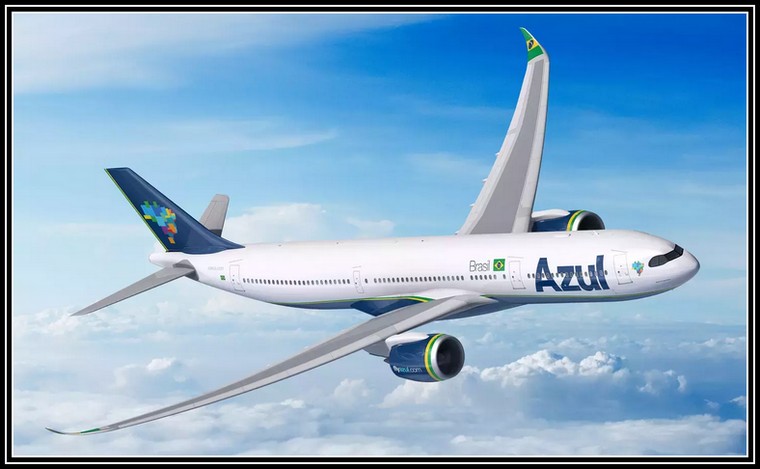
Azul has signed a firm order for three A330-900 which will allow it to further expand its international network and complement its existing A330 operations, bringing the airline's total fleet of A330neo aircraft to eight.
“We are delighted to have secured three more next-gen Airbus widebody aircraft for the upcoming years. This reaffirms our position as the airline with the most modern fleet in the region, with 70 percent of our capacity coming from fuel-efficient and environmentally friendly aircraft,” said John Rodgerson, Chief Executive Officer of Azul.
“We applaud Azul's decision that shows their forward looking strategy and proves the economics and performance of the A330neo are most compelling. The A330neo is the perfect tool to support Azul in expanding its fleet with the right-sized, modern widebody, leveraging the latest technology and efficiency and contributing to reducing CO2,” said Christian Scherer, Chief Commercial Officer and Head of Airbus International.
The A330neo is a member of Airbus' leading Widebody Family that provides lower operating costs and reduced environmental footprint by combining enhanced technologies from the A350 with highly efficient Rolls-Royce Trent 7000 engines. Featured with the Airspace cabin, the A330neo offers an unmatched passenger experience and operational efficiency thanks to a redesigned welcome area, enhanced mood lighting, larger and modern overhead compartments and new window and lavatory designs.
Azul Linhas Aereas launched operations in 2008 and has since grown to service more than 150 destinations within Brazil, and flies non-stop to the United States, Europe and South America. Azul received the Americas' first A330neo in 2019 and operates 12 A330 Family aircraft. In the coming weeks, Azul will start operating four A350-900 to further expand its route offering and benefit from the Airbus commonality concept.
In Latin America and the Caribbean, Airbus has sold over 1,150 aircraft and has a backlog of over 500, with more than 700 in operation throughout the region, representing almost 60 percent market share of the in-service fleet. Since 1994, Airbus has secured approximately 70 percent of net orders in the region.
EMBRAER E190-E2 GRANTED TYPE CERTIFICATION IN CHINA
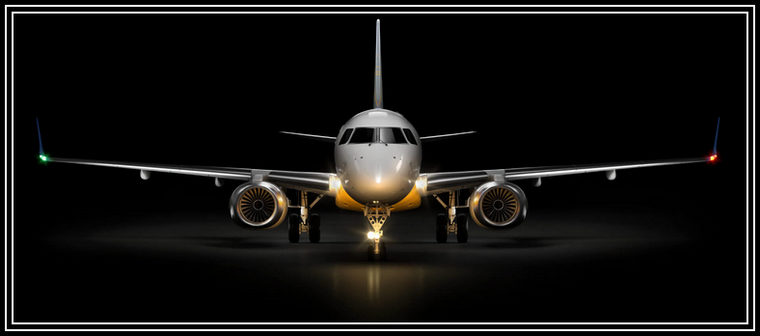
The Embraer E190-E2 has been granted its Type Certificate by the Civil Aviation Administration of China (CAAC), marking the start of exciting times ahead for Embraer's E2 programme in China. It is expected that certification for Embraer's larger E195-E2 aircraft, which is ongoing, will follow shortly.
“CAAC's certification of the E190-E2 is great news for Embraer and our prospective customers in China,” said Arjan Meijer, President and CEO of Embraer Commercial Aviation. “Certification paves the way for significant E190-E2 business opportunities in China - data reveals that one billion people living in China's second and third tier cities have never taken a flight.”
Meijer added, “The E190-E2 and E195-E2, seating up to 114 and 146 passengers respectively, offers complementary capacity to China's indigenous ARJ21 and C919 aircraft. The E2 will not only provide the best in class economics and emission reductions for airlines, but also help to accelerate implementation of China's Essential Air Service program to connect more secondary and tertiary cities.”
Embraer latest market forecast revealed that 1445 new aircraft in the up to 150-seat category will be delivered in China through 2041; driven by the nation's long-term economic development and the continuing trend of the Chinese civil aviation system evolving from point-to-point, to a more hub-and-spoke based network.
Embraer's E2 family of aircraft enables airlines to build operational flexibility, match capacity with demand and add frequencies, enhancing connectivity in China in the post epidemic era. E190-E2 and E195-E2 are the most fuel-efficient single aisle aircraft flying today, delivering 17.3% and 25.4% better fuel efficiency per seat respectively, compared to previous generation E-Jets.
“It's a big moment for our newest generation Embraer jet - the E190-E2 - to be certified by CAAC,” said Guo Qing, Managing Director and VP Commercial Aviation, Embraer China. “Besides its right-size and fuel efficiency, the E190-E2 was born with superior hot-and-high capability. It's the first aircraft in its class to have flown to some of the world highest airports in western China including Lasha and Yushu. We believe the E190-E2 is the best aircraft to serve low density but high elevation markets in western China with the right performance, more profitability.”
The E190-E2 first began service in Europe in 2018. It is a single aisle jet with a capacity of up to 114 seats in Embraer's signature two by two seating. Featuring the latest technology yet building on the maturity and reliability of the first-generation E-Jets, the aircraft delivers the lowest operating costs for airlines and outstanding performance that enables access to airports that have restrictions due to higher altitude or shorter runways. The aircraft is also designed for greater passenger comfort with more space for bags, has the smallest noise footprint and lowest emissions.
Google Banner Ad
QATAR AIRWAYS UNVEILS NEW BRANDING AT LONDON HEATHROW TERMINAL 4

Qatar Airways has unveiled new branding at London Heathrow Terminal 4 Roundabout. The branding features a 9-metre long Boeing 777-9 scaled model aircraft, placed above a 12-metre LED screen to highlight Qatar Airways' products, services, destinations and marketing campaigns. It also showcases the FIFA World Cup Qatar 2022 logo to promote the airline's official partnership with FIFA.
Qatar Airways Group Chief Executive, His Excellency Mr. Akbar Al Baker, said: “We are fully committed to serving passengers in the UK - one of our key markets- and we are fully confident that our new branding at Heathrow brings to life some of the exciting products and services we have on offer.”
Arianne Riddell, Director of Sales, JCDecaux Airport, “With this high-impact Out-of-Home installation at the T4 Roundabout, Qatar Airways will dominate the approach to Terminal 4, harnessing the full potential of this key location with this eye-catching display at Heathrow. As international travel continues to return, airport advertising remains a premium environment and a powerful communications opportunity, as showcased by Qatar Airways on this iconic site.”
The move follows Qatar Airways enhancing its passenger experience at Terminal 4 with a new Frequent Flyer Lounge exclusively for Privilege Club members and Oneworld alliance partners. The lounge boasts modern interiors overlooking the apron area and customers can indulge in a menu comprising of a hot and cold buffet selection and a range of beverages.
Qatar Airways' Premium Lounge in Terminal 4, the very first in the airline's global network, has also recently reopened its doors to Qatar Airways First and Business Class passengers. The premium lounge boasts elegant seating areas, apron views, a dedicated family area, a prayer room and diverse dining options including a full buffet and an à la carte menu served to fine dining standards at the brasserie and casual dining at the Global Deli.
Qatar Airways currently operates from four UK airports, which includes six daily flights from London Heathrow, two daily flights from London Gatwick, up to three daily flights from Manchester and a daily service from Edinburgh. In addition to the UK frequencies, the airline operates to Dublin with 11 weekly flights.
A multiple award-winning airline, Qatar Airways was recently announced as the 'Airline of the Year' for a record seventh time at the 2022 World Airline Awards, managed by the international air transport rating organisation, Skytrax. The airline continues to be synonymous with excellence having won the main prize for an unprecedented seventh time (2011, 2012, 2015, 2017, 2019, 2021 and 2022), while also being named 'World's Best Business Class', 'World's Best Business Class Lounge Dining' and 'Best Airline in the Middle East'.
Qatar Airways currently flies to more than 150 destinations worldwide, connecting through its Doha hub, Hamad International Airport, currently named the 'Best Airport in the World” by Skytrax World Airport Awards 2022.
Google Banner Ad

|
                   |























